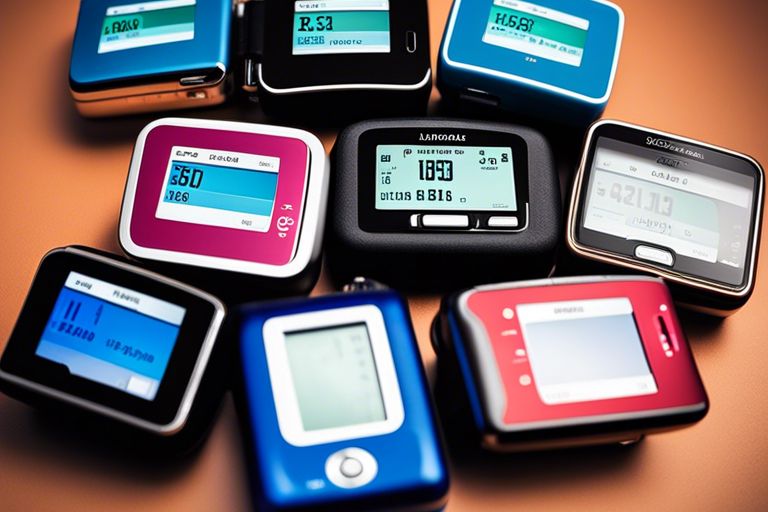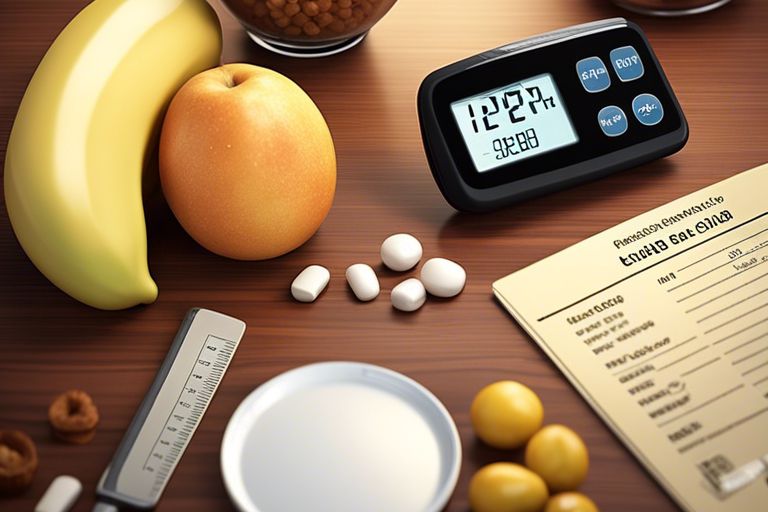Delve into the intricate realm of Type 1 Diabetes with this comprehensive beginner’s guide. By unraveling the complexities of this autoimmune condition, you will gain a deeper understanding of its causes, symptoms, and management strategies. From decoding blood sugar levels to navigating insulin injections, this how-to will equip you with the knowledge needed to effectively support those living with Type 1 Diabetes. Let’s commence on this enlightening journey together.
Key Takeaways:
- Type 1 diabetes is an autoimmune condition where the body attacks its insulin-producing cells.
- Symptoms of type 1 diabetes may include excessive thirst, frequent urination, weight loss, and fatigue.
- Management of type 1 diabetes involves monitoring blood sugar levels, taking insulin injections, following a healthy diet, and staying physically active.
- Complications of untreated type 1 diabetes can include heart disease, nerve damage, kidney damage, and vision problems.
- Education and support are crucial for individuals with type 1 diabetes to effectively manage their condition and live a healthy life.
Grasping the Basics of Type 1 Diabetes
Obviously, understanding Type 1 diabetes is a crucial step in managing this chronic condition effectively. By grasping the basics of Type 1 diabetes, you empower yourself or your loved ones with the knowledge needed to navigate the challenges that come with it.
Defining Type 1 Diabetes: The Medical Perspective
Diabetes is a chronic medical condition characterized by the body’s inability to produce insulin, the hormone necessary for converting sugar, starches, and other food into energy. Type 1 diabetes is an autoimmune disease where the body mistakenly attacks and destroys insulin-producing beta cells in the pancreas. This results in a lack of insulin and an inability to regulate blood sugar levels effectively.
Individuals with Type 1 diabetes require insulin therapy to survive. Without insulin, blood sugar levels can rise to dangerous levels, leading to long-term complications such as heart disease, nerve damage, and kidney problems.
Factors Contributing to Type 1 Diabetes Development
With the exact causes of Type 1 diabetes still not fully understood, several factors are believed to contribute to its development. These factors include:
- Genetic predisposition
- Autoimmune processes
- Environmental triggers
Perspective: In recent years, research has shed more light on the genetic and autoimmune components of Type 1 diabetes. Understanding these factors can help individuals and healthcare providers better manage the condition and work towards potential cures in the future.
Daily Management How-To’s
One of the key aspects of managing type 1 diabetes is staying on top of your daily routine. This includes monitoring your blood sugar levels, administering insulin, and making adjustments as needed. By following these daily management how-to’s, you can stay in control of your condition and live a healthy, active life.
Blood Sugar Monitoring Tips
Monitoring your blood sugar levels is an essential part of managing type 1 diabetes. To ensure accurate readings, wash your hands with soap and water before testing. Use a quality blood glucose meter and keep a log of your readings. Recall, fluctuations in blood sugar levels can happen throughout the day, so it’s important to test at different times, such as before and after meals, exercise, and bedtime.
- Check your blood sugar levels regularly throughout the day.
- Keep track of your readings in a journal or app to monitor trends over time.
- Adjust your treatment plan as needed based on your blood sugar levels and how you feel.
Monitoring your blood sugar levels can give you valuable insights into how your body is responding to food, activity, and insulin. By staying proactive and vigilant, you can avoid complications and maintain better control of your diabetes. Assume that your blood sugar levels can change rapidly, so be prepared to take action when necessary.
Insulin Therapy: Administration and Adjustment Factors
Sugar.
- Knowing how to properly administer insulin through injections or an insulin pump is crucial for managing type 1 diabetes. Consult with your healthcare provider to determine the right dosage and injection sites for you.
Knowing how to adjust your insulin therapy based on factors such as exercise, illness, and stress is key to keeping your blood sugar levels stable. Work closely with your healthcare team to develop a personalized insulin regimen that meets your individual needs. Assume that making small changes to your insulin doses can have a big impact on your overall health.
Management.
- Knowing how to interpret your blood sugar readings and make adjustments to your insulin therapy is a skill that can be learned over time. Stay informed about the latest developments in diabetes management and be proactive in seeking support from your healthcare team.
Lifestyle and Dietary Recommendations
Nowadays, maintaining a healthy lifestyle and following a balanced diet is crucial for individuals living with Type 1 Diabetes. By making mindful choices in nutrition and incorporating regular physical activity, managing blood sugar levels becomes more attainable. Here are some tips to help you navigate the realm of lifestyle and dietary adjustments when dealing with Type 1 Diabetes.
Nutrition Tips for Managing Type 1 Diabetes
When it comes to nutrition for Type 1 Diabetes, consistency and balance are key. Aim to include a variety of nutrient-dense foods such as whole grains, lean protein, healthy fats, and plenty of fruits and vegetables in your meals. It’s essential to monitor your carbohydrate intake as it directly impacts your blood sugar levels. Consider working with a registered dietitian to create a personalized meal plan tailored to your specific needs.
- Focus on portion control and spacing out meals throughout the day to help regulate blood sugar levels.
- Avoid sugary beverages and opt for water or unsweetened drinks instead.
- Remember to read food labels and be mindful of hidden sugars in processed foods.
Though managing Type 1 Diabetes through nutrition can be challenging, making small, sustainable changes over time can lead to better blood sugar management and overall health outcomes.
Exercise and Activity: How-To Balance with Type 1 Diabetes
Recommendations for individuals with Type 1 Diabetes include making physical activity a regular part of your routine. Exercise not only helps to improve insulin sensitivity but also contributes to better blood sugar control. It’s crucial to find a balance between your activity level, food intake, and insulin dosage to prevent episodes of hypoglycemia or hyperglycemia.
Nutrition plays a significant role in fueling your body for optimal performance during exercise. It’s essential to consume a combination of carbohydrates and protein before and after physical activity to help maintain stable blood sugar levels and support muscle recovery. Planning your meals and snacks around your workout schedule can help you achieve better control over your diabetes management.
Navigating Challenges and Seeking Support
Despite the diligent efforts of individuals with Type 1 Diabetes to manage their condition, they may encounter various challenges along the way. It is essential to recognize these obstacles and seek the necessary support to navigate through them effectively.
Recognizing and Managing Hypoglycemia and Hyperglycemia
For individuals with Type 1 Diabetes, maintaining blood sugar levels within a healthy range is crucial. Hypoglycemia (low blood sugar) and hyperglycemia (high blood sugar) are common challenges that can arise. Symptoms of hypoglycemia include shakiness, confusion, and sweating, while symptoms of hyperglycemia may include increased thirst, frequent urination, and fatigue. It is important to promptly address these issues by consuming glucose tablets or foods for hypoglycemia and adjusting insulin doses for hyperglycemia.
Additionally, carrying a medical alert card or wearing a medical alert bracelet can help others identify the condition in case of emergencies. Regular monitoring of blood sugar levels and being prepared with snacks or glucose tablets can also aid in managing these fluctuations effectively.
The Role of Healthcare Professionals and Support Groups
For individuals navigating the complexities of Type 1 Diabetes, healthcare professionals and support groups play a vital role in providing guidance and emotional assistance. Endocrinologists, diabetes educators, and dietitians can offer expert advice on managing the condition, insulin dosages, and meal planning. Support groups provide a platform for individuals to connect with others facing similar challenges, share experiences, and gain valuable insights into coping strategies.
Recognizing the importance of a multidisciplinary approach to diabetes care, individuals are encouraged to build a proactive relationship with their healthcare team and actively participate in support group activities. By fostering a supportive network and staying informed, individuals with Type 1 Diabetes can effectively manage their condition and lead fulfilling lives.
Conclusion
Upon reflecting on the beginner’s guide to understanding Type 1 Diabetes, it is clear that knowledge and awareness are key in effectively managing this chronic condition. By gaining a better understanding of how Type 1 Diabetes affects the body, individuals can take proactive steps in their treatment and care. From monitoring blood sugar levels to administering insulin, education plays a crucial role in empowering those living with Type 1 Diabetes to lead healthy and fulfilling lives. With the right information and support, navigating the complexities of Type 1 Diabetes becomes more manageable, and individuals can make informed decisions to optimize their health and well-being.
FAQ
Q: What is Type 1 Diabetes?
A: Type 1 diabetes is a chronic condition where the pancreas produces little to no insulin, a hormone needed to allow sugar (glucose) to enter cells to produce energy.
Q: What are the symptoms of Type 1 Diabetes?
A: Symptoms of Type 1 diabetes include increased thirst, frequent urination, extreme hunger, unexplained weight loss, fatigue, and blurred vision.
Q: How is Type 1 Diabetes diagnosed?
A: Type 1 diabetes is diagnosed through blood tests that measure blood glucose levels. Other tests such as A1C test and autoantibody tests are also used for diagnosis.
Q: What is the treatment for Type 1 Diabetes?
A: The main treatment for Type 1 diabetes is insulin therapy. This involves taking insulin through injections or an insulin pump to control blood sugar levels. Monitoring blood sugar levels, eating a healthy diet, and regular exercise are also important parts of treatment.
Q: How can someone effectively manage Type 1 Diabetes?
A: Managing Type 1 diabetes involves monitoring blood sugar levels regularly, taking insulin as prescribed, following a healthy meal plan, staying physically active, and keeping regular appointments with healthcare providers. Education and support from healthcare professionals are key to successful management.




